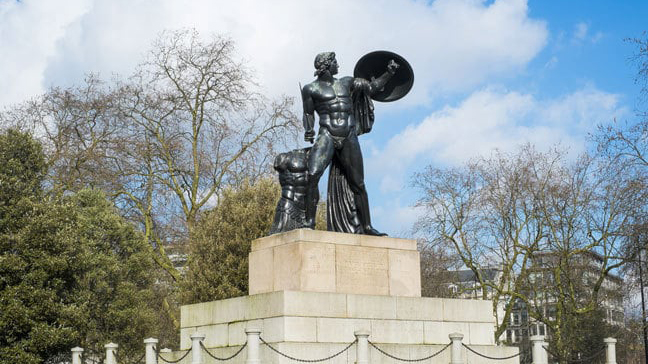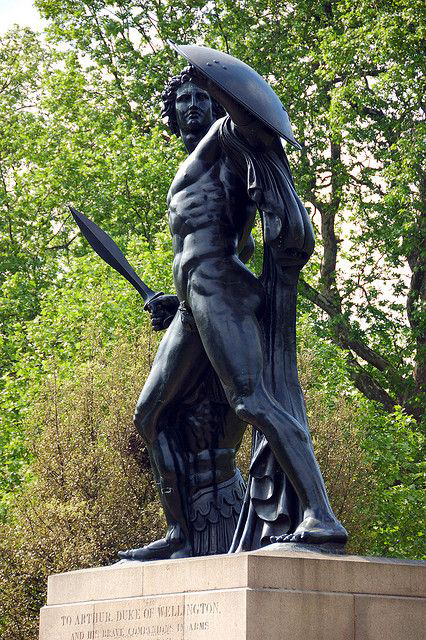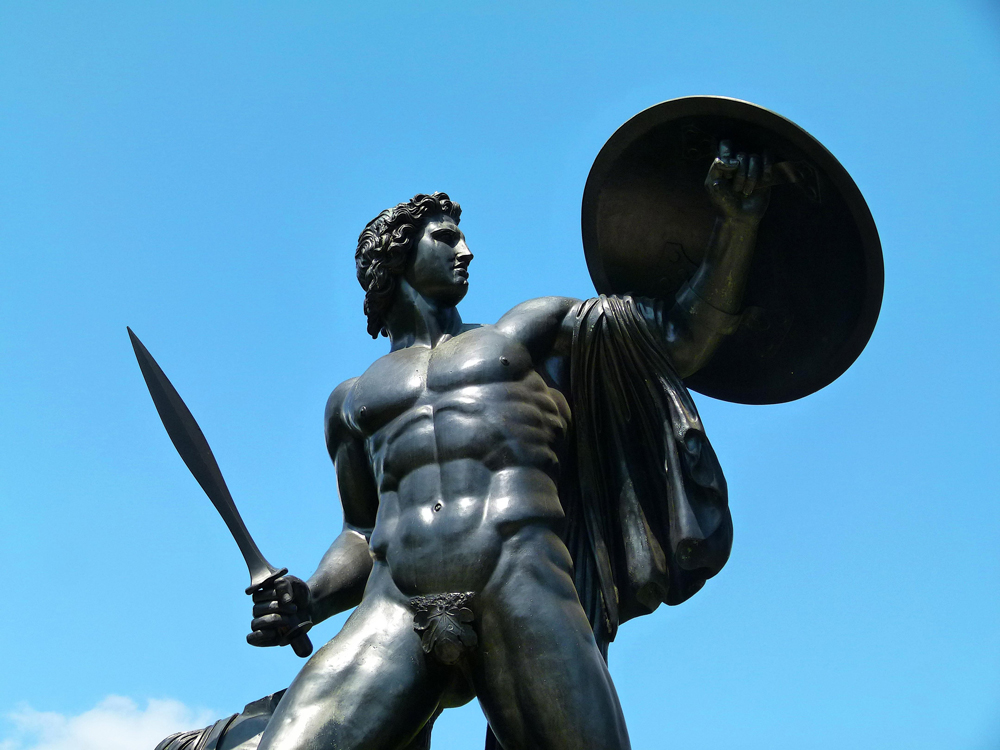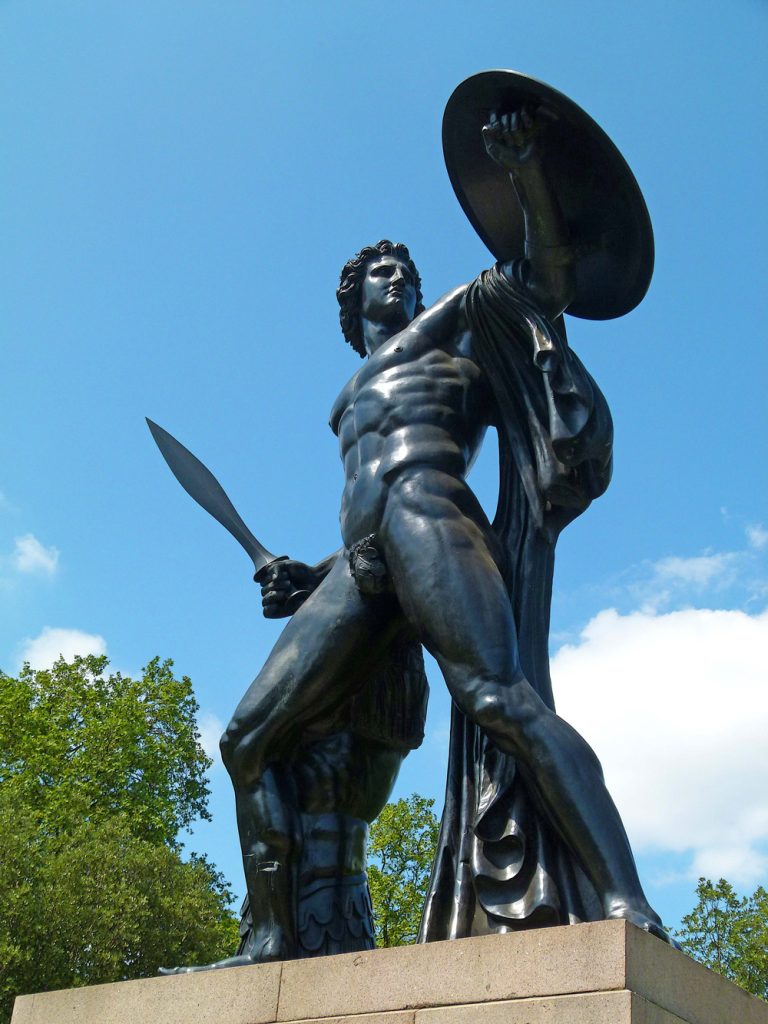Introduction

The Wellington Monument, located in London, is a statue representing Achilles in Greek mythology, established to commemorate the great victories of Arthur Wellesley, the first Duke of Wellington, especially in the later stages of the Peninsula and Napoleonic Wars. This statue of achilles represents not only the victory of the Duke of Wellington, but also a symbol of British honor and historical heritage. This article will delve into this statue, including its historical background, artistic value, and cultural symbols.
Duke of Wellington: The Embodiment of Military Genius
Arthur Wellington, the first Duke of Wellington, was one of the most outstanding military leaders in British history. He was born in 1769 and passed away in 1852. His life was full of war and victory. One of his most famous achievements was his victory in the Peninsula War, which successfully drove Napoleon’s French army out of Spain and Portugal. In addition, he also defeated Napoleon in the Battle of Waterloo, ending Napoleon’s hegemony.

The Creation and History of Statues
The statue of Achilles at the Wellington Monument was designed by British sculptor Thomas Campbell in 1822 and completed between 1832 and 1846. This statue is located in Hyde Park in London, approximately 18 meters high, and is named after the Duke of Wellington. The image of Achilles is based on the hero of ancient Greek mythology, who was a great warrior in the Trojan War.
The position of the statue was carefully chosen, facing the Parliament Building in London, symbolizing the political responsibility of the Duke of Wellington. The statue itself is also a magnificent artistic achievement of engineering, showcasing Balan’s high attention to details and carving techniques.
The Artistic Value of Statues

The statue of Achilles at the Wellington Monument has outstanding artistic value, with the following notable features:
Vivid expressiveness: The image of Achilles is vividly presented, especially with his muscles, facial expressions, and equipment showcasing the artist’s exquisite skills.
Magnificent scale: The height and scale of the statue are impressive, especially when people stand under it, they can deeply feel its majesty and grandeur.
Integration of History and Culture: The statue combines ancient Greek mythology with British history and culture, representing the victory and greatness of the Duke of Wellington.
Cultural Symbols and Symbolic Themes
The statue of Achilles at this Wellington Monument is not only a sculpture, but also carries profound cultural symbols and symbolic themes:
Victory and heroism: The statue represents the great victories achieved by the Duke of Wellington in the Peninsula War and the Battle of Waterloo, as well as symbols of heroism and military honor.

British History and Honors: This statue is a part of British history and culture, representing the glory and prestige of the country.
The intersection of politics and military: The statue faces the Capitol, combining political and military victories, emphasizing the political and military leadership of the Duke of Wellington.
Conclusion
The statue of Achilles at the Wellington Monument is a part of British history and culture, representing the victory and greatness of the Duke of Wellington. This statue is not only a magnificent sculpture, but also a symbol of British history, culture, and military honor. Its existence encourages people to pursue victory, heroism, and honor, while also showcasing Britain’s prestige and pride to the world. The statue of Achilles at the Wellington Monument forever engraves the legend of the Duke of Wellington and the glory of England in people’s memories.

